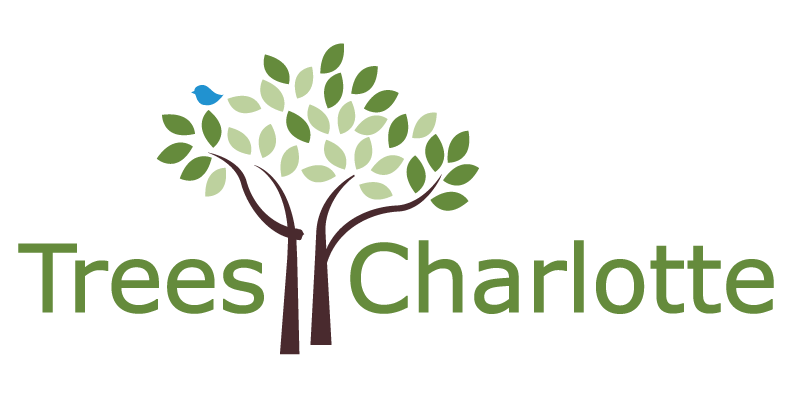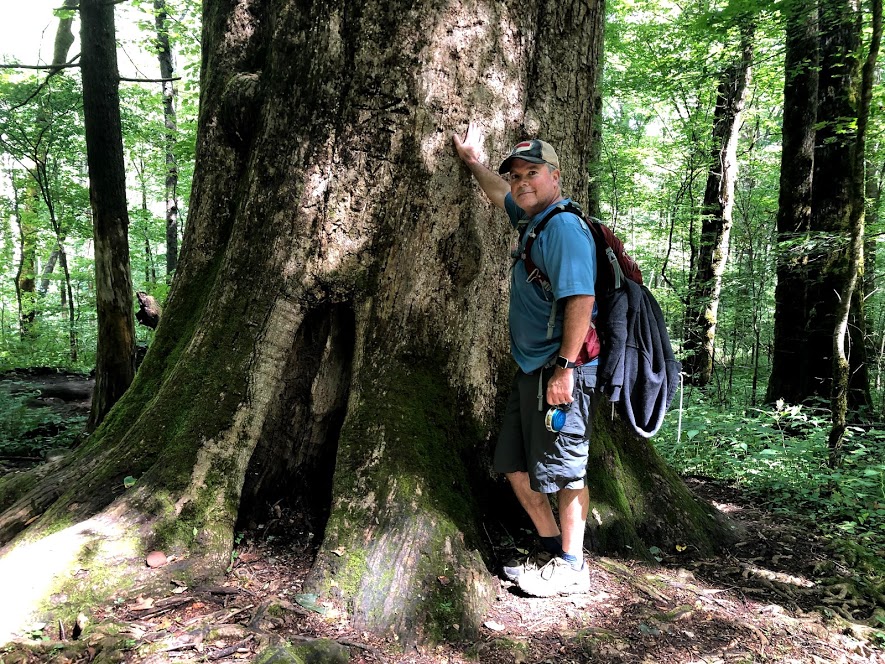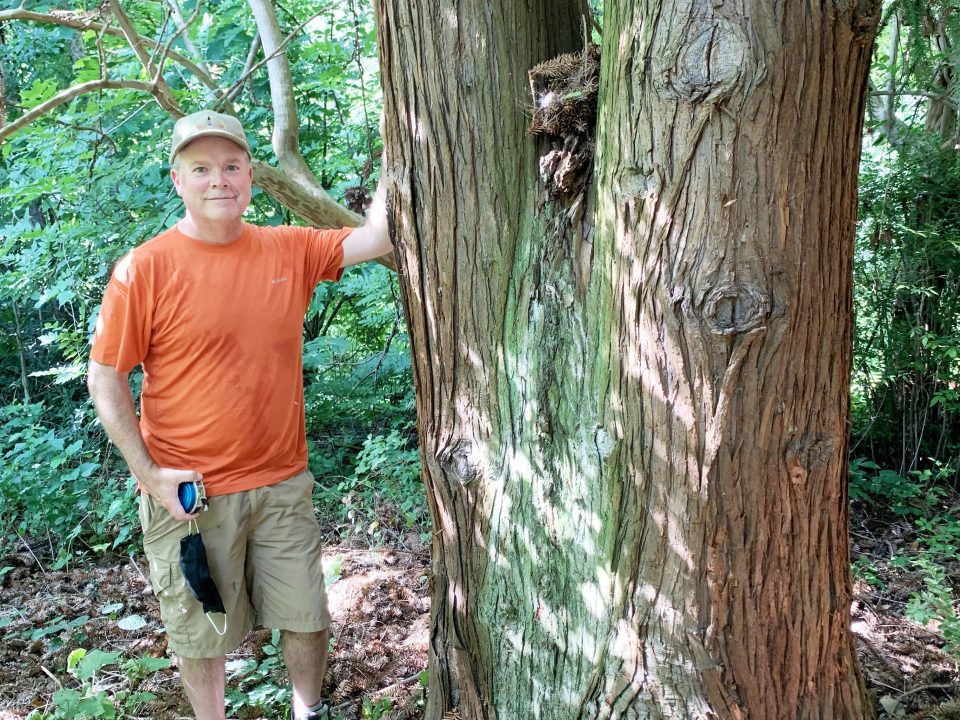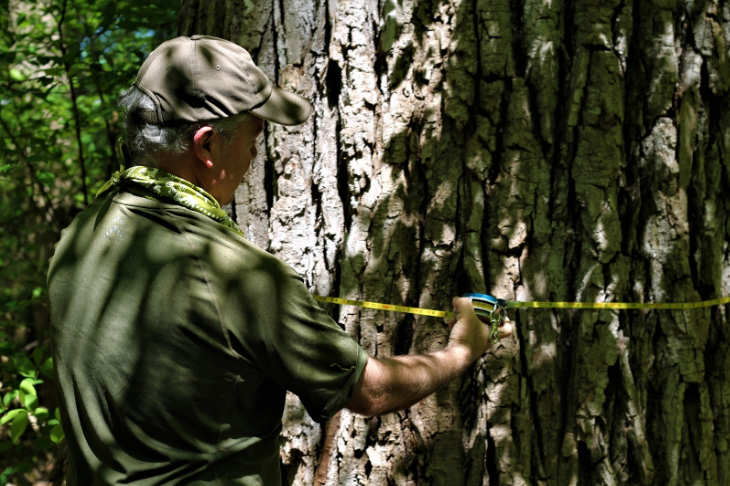The “Lost” Treasure Trees

Growing a Tree from a Seed
9.01.22
4 Trees You Should NOT Plant
11.01.22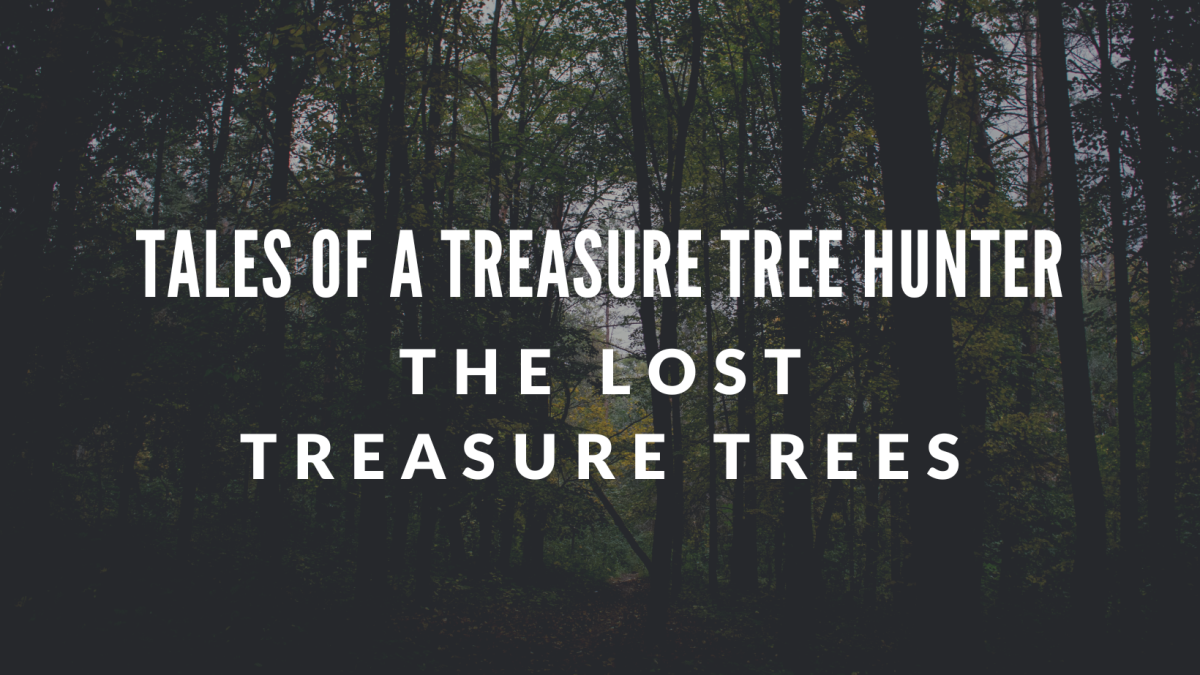
By: Brett Dupree
September 2022
It has been quite a while since I’ve had the time to add to this “tree hunter” blog. As we all know too well, there has been a lot going on during the last year or so. The Treasure Tree Program is picking up steam again, so this was a great opportunity to share some newly discovered information.
The original Treasure Tree Program started up back in the late 1980’s. We have documented a lot of the stories in earlier blogs here and on a few of the other Treasure Tree pages. When I started really getting interested in the history of the program about three years ago, there were a lot of rumors about a trove of original documentation from the beginning days of the program all the way up into the early 2000’s. I exchanged a few emails with Bill Logan about this material. He was one of the original chairs of the program during the 1990’s right up into the early 2000’s. He clearly knew about the materials, but had no idea what happened to them.

Two years ago, I was able to get in touch with Don Seriff. At that time, he was Natural Resources Coordinator for Mecklenburg County. He was able to fill in some of the gaps about the program at the point where the original committee went separate ways. The county was asked to take over ownership of the program at this point around 2001, and the original committee likely handed over the program materials for safekeeping. Don’s staff at the time re-located all of the original trees and prepared updates on status and health. They continued to monitor status of the trees and keep the materials for several years. Around 2007, a new arborist section was created within the maintenance division of county government. Don Morgan headed this section, and they took over ownership of the Treasure Tree Program. Shortly after that, the recession hit and more than 200 full-time positions were eliminated in county Parks and Recreation. Even with this turn of events, someone had the foresight to hang onto the program documentation.
Another solid clue turned up with Al Harris. I was able to get in touch with him via email about two years ago. Al took a great interest in the program back in 2008. He was a Landscape Architect, a budding Arborist, and a photographer. He set out to write a book about the Treasure Trees and the history of the original program. Al also wanted to bring the original program back to life. At some point, Al met with Bill and got his hands on a trove of original program materials. Al did not complete the book, and moved out of the Charlotte area at some point. Before he moved, he handed all of the material over to someone else in Charlotte who was involved in some manner with reviving the Treasure Tree Program. That handoff was just about impossible to pin down.
Fast forward to 2019, when I first met up with the new group of people trying to bring the old program to life. Two key people in that group were Patrick and Julia George. Patrick started Heartwood back in 1979, and he has dedicated his entire career to caring for trees all over the Charlotte area. Julia is Patrick’s daughter, who works as Communication Director at Heartwood. Julia is just as passionate about trees as Patrick, and she was setting up monthly meetings made up of a group of very motivated volunteers keeping the history of the original program alive. In several of the meetings, there were references made to the famous “big box of materials” from the original program. It continued to survive as a legend, because nobody had laid eyes on it in about a decade.
In the last couple of months, Heartwood moved its Charlotte headquarters. During the process of cleaning out the old offices, the “holy grail” was located. This turned out to be not one but two old cardboard boxes packed full with three-ring binders, manila folders, and a lot of old tree care textbooks. Paperwork in the binders was absolutely meticulous. It contained handwritten meeting agendas and notes going back to the late 1980’s, when the Mecklenburg Forestry Association was up and running. The MFA eventually gave birth to the Treasure Tree Program through the vision of Tom Martin and Joe McLaurin.
I purchased a document scanner, and sat down to begin digitizing the trove of materials. I found documents in here from Art Harris, which were likely merged into the boxes when he was researching the book he wanted to write. There were other documents present that extended the end date of the original program at least seven years later than we all had known about. Up to this point, those of us who got pieces of information from the original program knew about a list that included 123 trees. The last trees that were added to the program were dated in the year 2000. In the midst of the documents I found after that year, I stumbled onto another Treasure Tree list printout that was dated 2003. This list included 3 more trees we did not know about.
In addition to 3 additional trees there were several email exchanges in 2007 between Bill Logan, Tom Martin, and Carla Vitez about another tree we did not know about that was located in Matthews. Carla Vitez was another volunteer member of the committee at the time. She is still active in the North Carolina Native Plants Society, and continues to share her wealth of environmental knowledge around the area. Carla reconnected with Bill and Tom to help recognize a Sourwood tree that the 4th grade class of Covenant Day School had identified as part of their forestry studies. Their teacher at the time was Barbara Stegall, and she had received a tip from a parent about the special tree on school property. They found and measured it, then submitted it to the NC Forest Service. It was recognized at the time as the largest of its species in the state. In addition to its state recognition, the Sourwood was also added to the Treasure Tree registry.
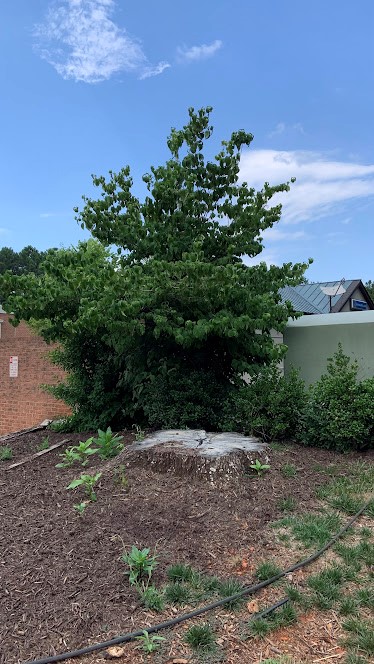
This took the total number of original trees recognized by the program to 127. So, here is what we know about the “lost Treasure Trees” at this point in time.
Treasure Tree #124 – Common Hackberry (Celtis occidentalis)
This large Hackberry boasted a circumference in 2000 of about 12 feet. For those of you who have been in Charlotte for a while, you will remember the bank branch that used to sit on the corner of Providence and Sardis Road. Strawberry Hill shopping complex sat in behind the bank building, and this big tree was in between the two. After researching Google Earth historical aerial imagery, it appears as though this tree was removed just in the last couple of years. A recent visit to the site revealed a large stump behind the old Fresh Market location, and no other signs of a Hackberry in that area.
Treasure Tree #125 – Persimmon (Diospyros virginiana)
This was a very large tree for its species, measuring 43″ in circumference back in 2001 when it was added to the program. The tree stood on the grounds of Myers Park Presbyterian Church, and it was located on the property where the outreach center and gymnasium were built. Not too long after I discovered this information, I reached out to the church and found out that the tree was indeed still standing. On a visit to the property, this beautiful specimen appeared to be very healthy.
Treasure Tree #126 – Red Mulberry (Morus rubra)
This late addition to the program was also added in 2001. It had a circumference of 83″ and a total points value of 140 at that time. It stood on private property near Beverly Woods and Quail Hollow. At this time, we are reaching out to the current homeowners to verify whether or not the tree is still standing.
Treasure Tree #127 – Sourwood (Oxydendrum arboreum)
This former NC champion Sourwood had a rather impressive set of measurements in 2007. It was 93″ circumference, 49′ in height, and 47′ average crown spread for a total points value of 154. We have reached out to Covenant Day School to try and find out if this tree still stands. The only information we have is that it was behind the ballfield of Warner Park, which was expanded significantly back around 2010. Hopefully, this tree survived the expansion.
Stay tuned! As we continue to research this last set of Treasure Trees, we will provide updates on what we find.
